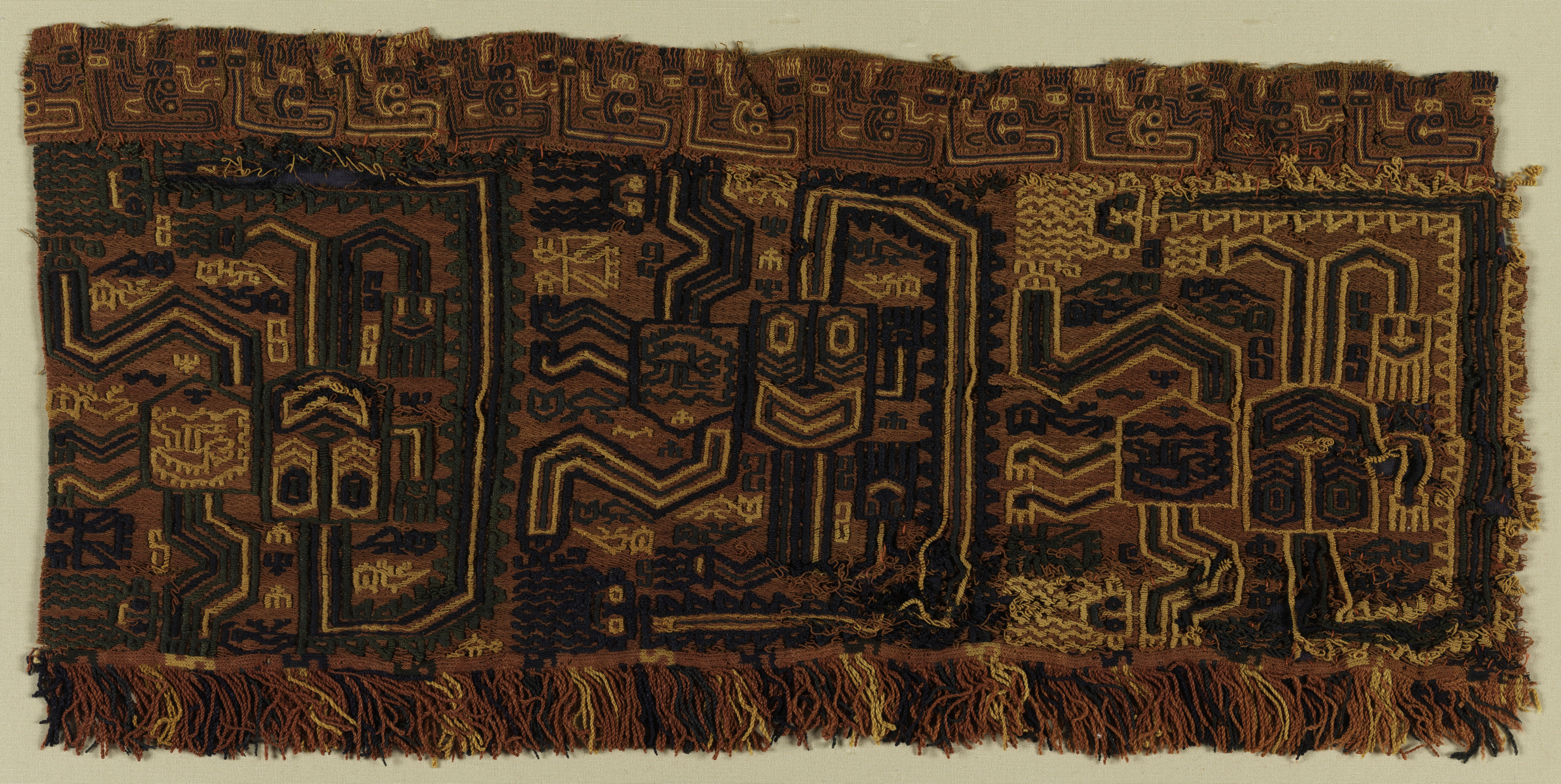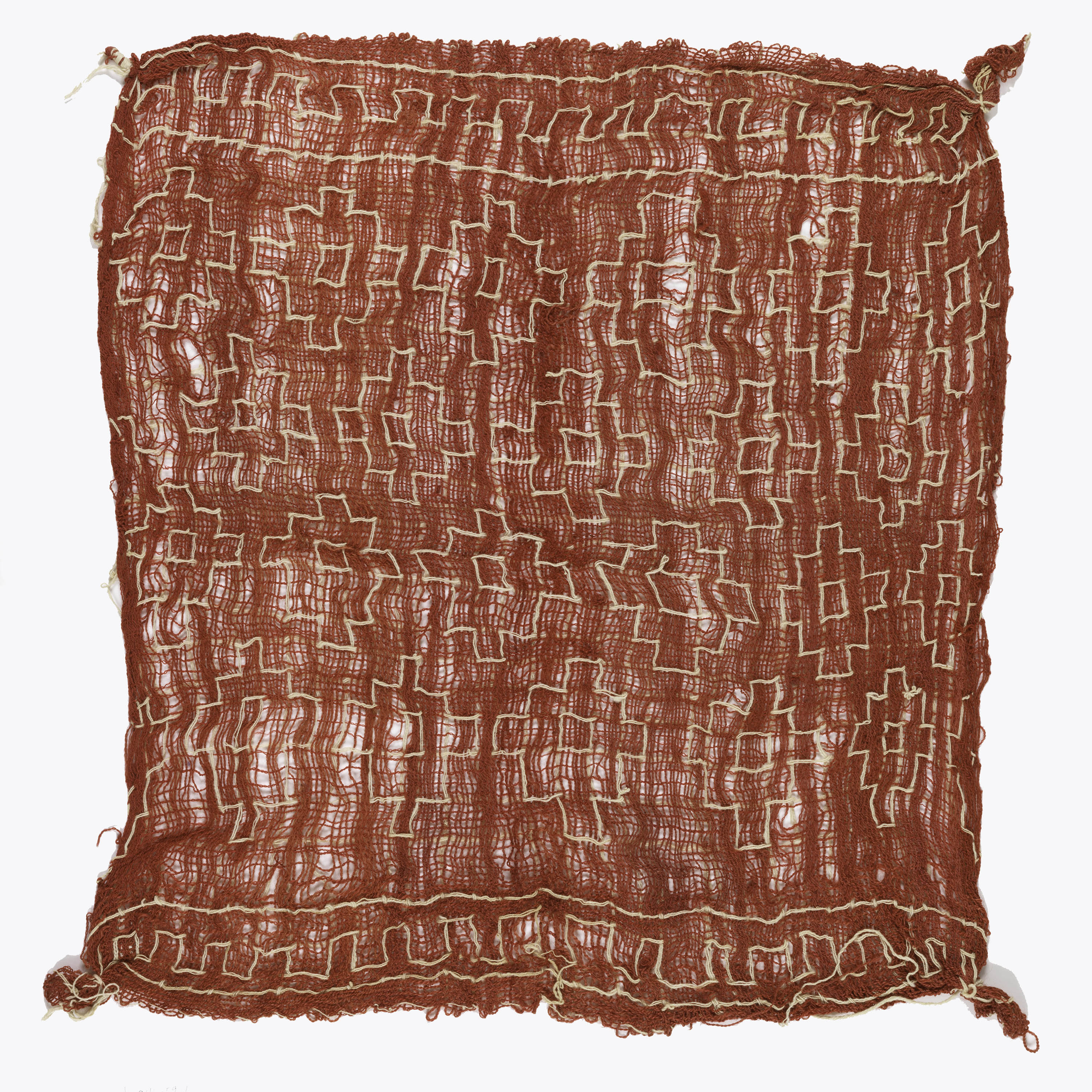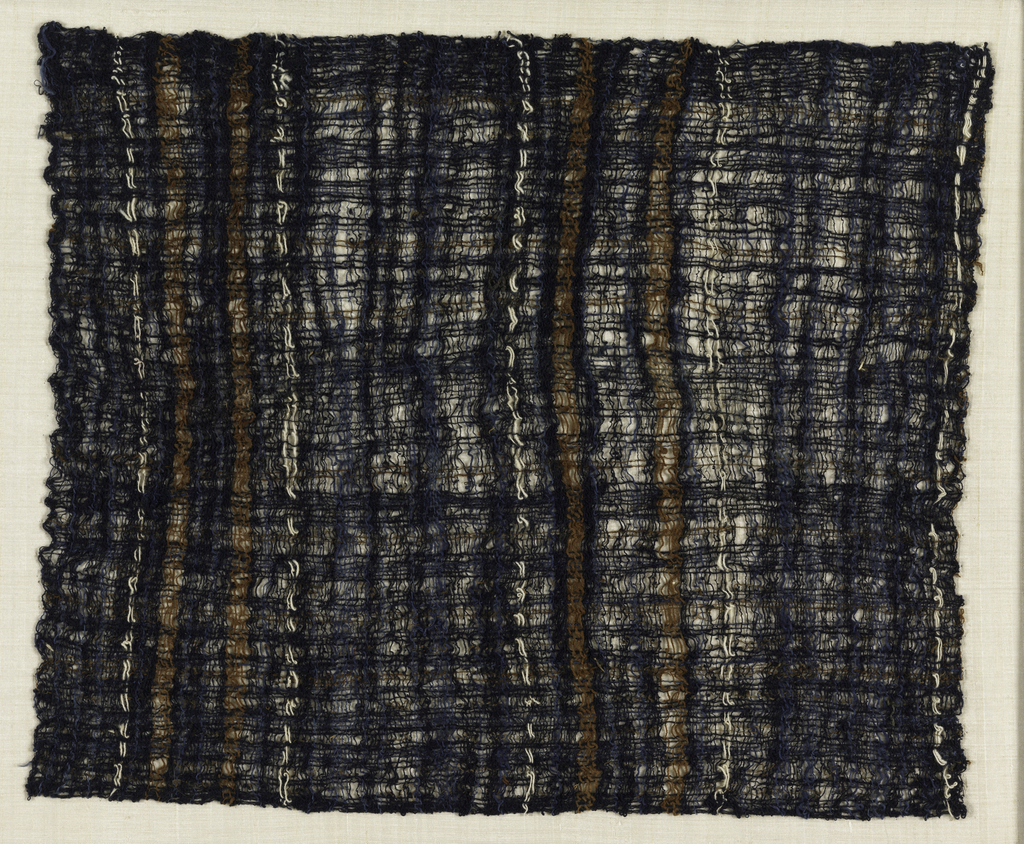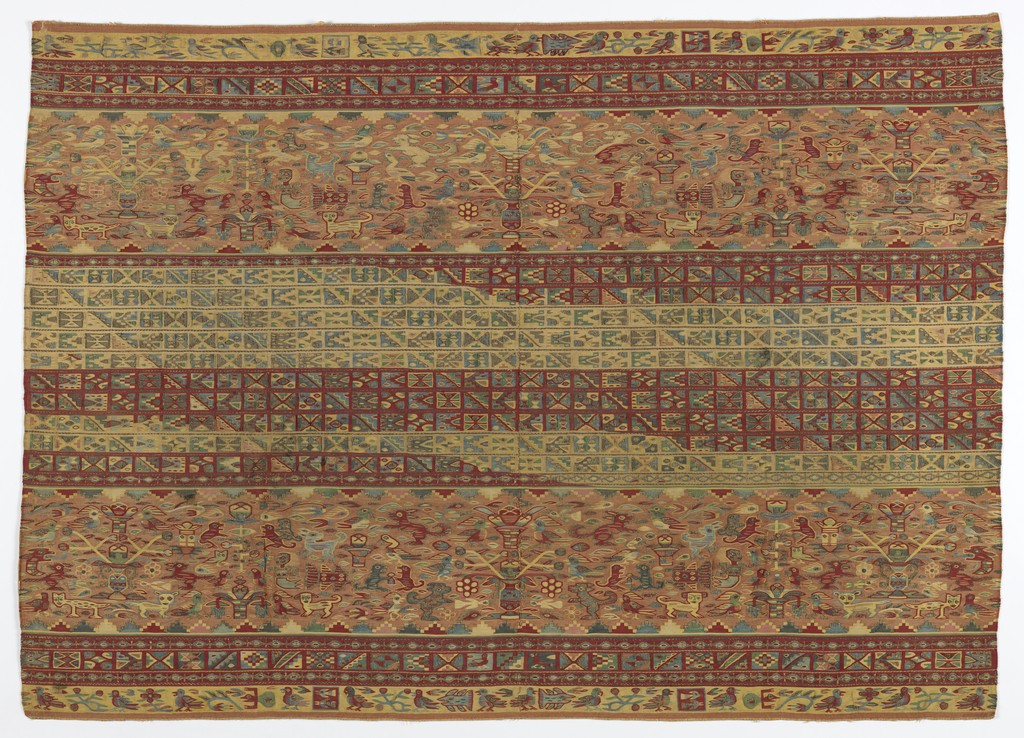This border fragment, formerly part of a large mantle, is one of a group of textiles found in a necropolis on the Paracas peninsula in southern Peru. Over four hundred such burials were found in the 1920s by Peruvian archaeologist Julio C. Tello, including mummy bundles wrapped in layer upon layer of beautifully embroidered textiles...
The idea of completeness was central to Andean design thinking. This simple, small piece is a four-selvedged cloth, with all edges intact. Structurally, it integrates two woven planes, one red and one white, in a double-cloth structure. The red ground is a simple plain weave, where yarns go over and under in a regular interlacement....
This simple, small rectangular cloth is an example of four-selvedged weaving—the process of weaving cloths of specific sizes and shapes without cutting any edges. The tradition was practiced for millennia in the Andes, and is rarely found elsewhere in the world (in most cultures, woven textiles were cut from the loom). Inherent in the four-selvedged...
This beautiful cloth is a woman’s shoulder mantle, called a lliclla in the Quechua language of the Inca Empire, and was made during the colonial period of Peru. A perfect blend of the cross-cultural elements of the 16th– and 17th-century era of global trade, the Chinese silk and Spanish silver threads are woven with Inca techniques and...



